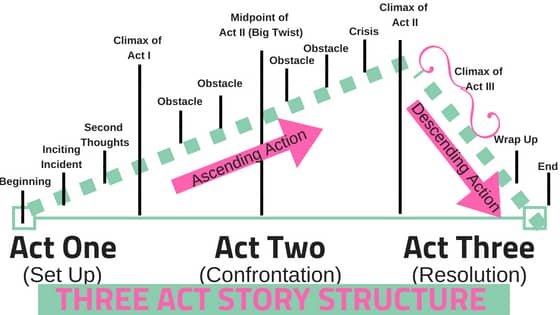Disclosure: The content on this site is free. Some of the links below are affiliate links from companies like Amazon.com and if you click the links and make a purchase we will receive a small commission at no additional cost to you. Thank you in advance if you decide to support our site by using our affiliate links!
Great characters are the lifeblood of any winning novel, as writers, we need to be able to craft these characters out of thin air. This critical skill, learning how to create engaging and memorable characters from the ether, is what separates great writers from all the good ones.
The good news is that character development or learning how to develop a character, like every other skill in writing, can absolutely be learned and improved over time.
In this comprehensive guide to character development, you will learn how to develop a character in a systematic step by step process that you can use and adapt moving forward to create iconic characters your readers will love.
Character development is something that we should continuously strive to improve, even if you are great at it, it’s that important.
Article Topics
What is Character Development?
Before we can go into how to develop a character let’s define character development to make sure we are on the same page.
So, What is the definition of character development? The definition of character development is the process by which a writer creates a believable and multi-dimensional character by fully developing the character’s personality, depth of being, and arc to create a well-rounded and fully engaging being for the reader.
You might be wondering why this is so important…
Why is Character Development & Building Important?
There are many elements that go into writing a book, but none are perhaps as important as the characters.
Characters are what hold all other elements of your story together as a binding agent that gives the events and setting meaning.
Without characters, the setting of your events is inconsequential, as are the plot points themselves as they occur in a vacuum without having any effect on anyone.
As a writer, your book can overcome a mundane setting or predictable plot point, far more than it can survive with mundane or flat characters.
Give your readers well-developed believable characters they care about, and the reader will feel fully vested in the journey they are about to undertake.
If you fail to develop your characters, the reader will lose interest quickly. They won’t find the characters relatable or realistic, which will, in turn, keep them from caring about what happens to them.
A well-developed character can drive your novel or series. If you’ve ever heard someone say, I keep coming back for the people, well think of your characters the same way. When you’re building your characters ask yourself, are your characters worth coming back for?
Examples of Common Character Development Mistakes Writers Make

Common Character Development Pitfalls
I think it is important to look at some of the common character development mistakes that writers often make when writing a book.
Think of this as things writers do pretty often but probably shouldn’t when they are writing their novels.
Keep in mind this is not an exhaustive list, nor does it always mean that if you do these things they are wrong. But in the context of learning out to develop more memorable characters, I want to list a few of the pitfalls that you could fall into if you aren’t aware of them.
Pre-Writing Character Pitfalls
- Not Fully Understanding Your Characters Personality & Backstory: You are creating this character from thin air but you need to understand the inner workings of your character to understand how they would react to a given scenario. A lot of writers skip this step because they want to dive into the writing. But remember these characters will either grip your readers or leave them feeling unfulfilled looking for another book to read.
- Not Knowing Their Intrinsic Motivations: Just like people, we all have different motivations in life, which may cause us to act and react completely different from others when facing similar scenarios. The same should go for your characters, you need to take the time to understand what makes them tick.
- Not Developing a Purposeful Character ARC: Many times writers spend all their preproduction time plotting out their story, but they fail to take that same care and time when it comes to mapping out your character arcs. Remember the most amazing plot thrills and twists mean nothing if the reader doesn’t care about the people experiencing them.
- Not Understanding Relationships: Your book, your world. So a lot of times writers kind of wing it when it comes to your characters relationships. However, people are social beings and your characters should be too. So if you are about to send these characters off on a 50,000-word journey that you are creating from scratch, shouldn’t you fully understand how they these people relate to each other.
Writing Character Pitfalls
- Making Your Characters Perfect: You’ve obviously heard the cliche, “nobodies perfect.” Then why do so many writers create these perfect main characters that just aren’t realistic or relatable? Remember people are drawn to others like themselves. If you create a perfect hero, with no flaws, how many of your potential readers match that description?
- Underwriting supporting cast to make Hero stand out: This is one a lot of writers don’t think about. But often writers focus on building out their main character so much that they ignore the supporting cast. That leaves the people around your main character feeling one dimensional. This will ultimately detract from your main character as it will leave him seeming superior and unbalanced with the rest of the cast.
- Forcing Characters Fit the Plot: Ever read a book or watch a movie where everything magically falls into place at the end. Well if that is done wrong it just feels contrived, uninspired, and lazy. The same goes for cramming your character into a plot line or action that doesn’t fit their plot. Characters do and absolutely should change throughout a novel but that change should be grounded in that character’s personality, so forcing your character to throw that all away to have them act a certain way to fit your plot, is a common pitfall when it comes to character development.
- Being a Slave to the Archetype: Archetypes can be used as an outline of your character, it will make them easily identifiable to your reader, but relying too heavily on one single archetype without blending traits from other archetypes will make your character boring and predictable.
These are some of the common mistakes we writers make when developing a character. Like I said this is by no means an exhaustive list, but by being on the lookout for these 8 examples of common character development mistakes should get you off to a good start when it comes to developing a more likable character.
Goals of Character Development
Before we go into our step-by-step guide on creating stronger characters, let’s take a closer look at some general goals you may want to think about when developing a character.
I really think it’s important to know what the goal is if you are going to hit it.
So here are a few goals you may want to shoot for when developing your character:
- Make your characters relatable
- Make them realistic
- Make your characters likable
- Make your readers become vested in what happens to your characters
- Make your character memorable after they are finished reading
- Make your characters leave your readers wanting more of them
- Make them multi-dimensional
- Make them imperfect
- Make them grow throughout the story
- Make your characters illicit emotion from the reader
- Make them HUMAN
A lot of these character development goals probably sound pretty obvious when you read them and that’s the point! In order to make better more likable characters, you need to make them human.
For all its greatness, there are many flaws in humanity as well. Make your character reflect all of it, if you want your reader to care about them.
How to Develop a Character – The Ultimate 4 Step Guide
In this section, we will look at the step by step process of making your characters stronger, more likable, and overall better.
Obviously, this isn’t the only way to do it, so feel free to take this process and use it in its entirety or take parts of it and build on it with something that works better for you.
STEP ONE: BUILD THE BASICS TRAITS OF YOUR CHARACTER

Mr. Potato Head Base- ie. Step One of Character Development.
In this step, you want to think of it as simply getting to know your character at a surface level. This is the point in the character development preproduction where you will start to give your character general characteristics of who they are.
Many times this where writers stop in their character development process. I know that might seem strange but in this step, you will get a lot of information out about your character, and at the surface, it may seem like more than enough to start writing. But the truth is if you stop after completing this step, you will risk having superficial and unmemorable characters.
What kind of character information goes in Step One?
Here are the types of character traits that you should build out in step one of your character development.
- Name, DOB, Age, Location, Occupation, Education
- Physical Attributes of your character
- Basic character traits
- Relationships to other characters.
- Hobbies
- Likes and Dislikes
3-Character Development Exercises to use in Step 1 of your Character build out
- The Character interview or Sheet: The most common you hear about today is doing a character interview or filling out a character sheet. This can be a very useful exercise in getting to know the basics of your character. The nice thing about filling out a character sheet or conducting a character interview is that it forces you to create a baseline for all your characters. If you complete the same interview or character sheet for each character, then you will have a solid foundation for each moving forward.
Read our article on 100 interview questions to ask or include on your character worksheet.
- The Catfish Method: Another way to think of this information is to consider it much like the information you find on a social media page. So you can go through the exercise of creating a fake Facebook page for your character. Many of you might be saying Facebook isn’t superficial it has everything about a person. But when you really think about it, I bet you have people your friends with on facebook right now that you could go on and read basic information about them, but if you were honest, you had no clue as to who they really are as a person.
- Cast the Character: A process that the story studio guys talk about often in their character development process is actually casting an actor for each of their main characters. I’ve used this technique and actually like it. It sounds simple but having a quick picture of a famous person or character can be a great way to anchor yourself in what you want this character to be. I would suggest you combine this method with one of the first two exercises mentioned above for the best results.
STEP TWO: DISCOVER YOUR CHARACTER’S INNERMOST THOUGHTS AND FEELINGS
If step one was getting all the basic character traits on paper. Step two can be thought of as getting into the soul or inner workings of your character.
This step is vitally important as it will help guide your writing throughout your novel. Once you have been to the deepest parts of your character’s mind and personality you know exactly how they would act or react to a given event in your novel.
Think of this as key in creating consistency in your character’s behaviors as well as properly setting up your character’s growth throughout the novel.
After all, we are a combination of our inner thoughts and life’s experiences, so we need to understand the inner workings of our character to justify how they will react and grow through those experiences.
Exercise for Getting into Your Character’s Soul
- Perform a Mock Psychiatric Evaluation: Ok so you don’t need to be an MD to develop great characters but this is a great exercise none the less. Sit down and pretend you are a shrink for your character and dive deep into their heads to discover who they really are. Here are some sample questions to get you started:
- What do they want most from life-both outwardly and intrinsically
- What are their biggest fears
- Have they ever self-sabotaged? Why do they think that is?
- How was their childhood growing up?
- How is their relationship with their parents?
- How do they see themselves?
- How do they think the world sees them?
- How does the dissonance between the two effect them?
- What do they hate most about themselves?
- What is their biggest strength?
- What makes them anxious?
- What was the happiest day of their life?
- What was their worst day?
- Do they have an addictive personality?
- If they could be someone else who would it be?
- What would their perfect life look like?
- The Inkblot & Word Association Test: Give your character these two tests and see how they respond. This can seem tricky at first as you need to be in the heads of the shrink and the character. But a little trick you can use is to simply have a list of inkblot or word association prompts in front of you. So you don’t have to come up with them yourself, this will allow you to get into and stay in the headspace of your character easier.
- Fill out a personality test for them: If you want to get really deep with them. Once you have done the steps mentioned above, take a personality test as your character to see what comes out. The results will not only be interesting but really help make your character’s personality real to you as the writer and more importantly to your readers.
STEP THREE: MAP OUT A FULL CHARACTER ARC
Once you have completed the first two steps, take the time to clearly define your character arc. Be methodical with this.
Plot it out systematically like you would your actual story.
Exercise for Mapping out your Character Arc
Take your chosen story structure and overlay a character arc over it.
Focus on mapping out the character’s development and not events in the novel. That is already part of your story structure outline and plot.
[otw_shortcode_button href=”http://selfpublishinghub.com/how-to-outline-a-novel/” size=”large” icon_type=”general foundicon-right-arrow” icon_position=”left” shape=”square” color_class=”otw-red” target=”_blank”]Learn How to Outline a Novel Here[/otw_shortcode_button]
The point of this to overlay your character’s transformation so it coincides with your story. So if you were using a 3-act story structure like the one below, you would make sure your character’s personal development is mapped out in each act.

Focus on the inner emotons, fears, doubts, world perspective of your character when mapping out their character arc. They should look and feel very different from the start to finish of your story.
CLICK HERE TO LEARN MORE ABOUT DEVELOPING GREAT CHARACTER ARCS
STEP FOUR: WRITE IT FROM THEIR PERSPECTIVE
Once you have completed the first three steps, test your work by going through your scene list and writing a paragraph of each scene from your characters point of view. This will help you truly understand how the character will interact during your novel.
It’s a lot of pre-writing, but it will definitely cut down on your writing time for your first draft. You will be able to simply flush out the paragraph into full scenes. Since you will know exactly what happens and how your character will react to it.
Doing this for multiple characters will help you bring more breadth to the overall story, make sure you have enough variety of characters and cut down on writer’s block while you write.
7 Tips & Ideas on How to Make Your Character More Interesting & Memorable.
- Embrace the Imperfections: We talked about it earlier but perfect characters are unrealistic and boring. One way to have your character stand out is to embrace and highlight their imperfections. A lot of writers fail to give this the attention it deserves when they are constructing their characters. This can lead to a few different problems:
- Your character ends up missing flaws that will ultimately help to make them human.
- You end up realizing this too late and trying to cram in an idiosyncrasy without being able to fully develop it.
- You have to go back and do extra rewriting to develop this throughout your novel retroactively.
In the scene above from Good Will Hunting, still one of my favorite movies by the way. Robbin William’s character a psychiatrist is talking to Will Hunting (Matt Damon) about imperfections and how those are the little things he remembers about his beloved departed wife. Take a look it’s a good scene to hammer the idea of embracing your characters imperfections are a great way to make them more interesting and memorable.
Another great example of embracing your character’s imperfection can be seen in HBO’s The Night of, where John Turturro a lawyer has this horrible subplot throughout the series dealing with severe eczema on his feet. Yes, this imperfection got a little gross at times, but it sure was memorable. Take a look at just how far the writers went with it on that show below.
- Use a Mix of Direct and Indirect Characterization: Having your character well developed prior to writing is a huge help, but sometimes writers fall in the trap of using too much direct characterization to describe the character. The tendency is that since we have done so much pre-writing work on our character development, we get a bit overzealous in sharing as much of that information as we can, as quickly as we can.
Remember if you only use Direct characterization you won’t give your readers the opportunity to discover the character for themselves. Make sure you use a blend of direct and indirect characterization when writing your characters, this will make for a much more entertaining experience for your readers.
[otw_shortcode_button href=”http://selfpublishinghub.com/direct-vs-indirect-characterization/” size=”large” icon_position=”center” shape=”square” color_class=”otw-red” target=”_blank”]READ MORE ABOUT DIRECT AND INDIRECT CHARACTERIZATION HERE [/otw_shortcode_button]
- Know their weakness: Most of the time people think that their’s hero’s journey is defined as achieving a certain goal or overcoming a certain obstacle. While it is important in your hero’s journey, the reader cares more for the growth of a character throughout that journey.
Meaning the internal weakness that the character must overcome in order to succeed in their quest is more important to the long-term likability of a character than the actual quest itself. Plan this from the onset, make sure you build it into your character throughout.
HINT: The more your readers can identify with your character’s weakness and fears the more relatable and likable they will be.
- Real life isn’t linear: For most people, life is a continuous ebb and flow of ups and downs. Most people aren’t born onto an ever-ascending path of success. Make sure the same goes for your characters. Many people create a character arc that ends up being a linear progression, this just isn’t as realistic as it could be. Your book shouldn’t feel like page one was a contrived epiphany to set your character on a path towards enlightenment. Most of us realize this when it comes to our plot structure, but don’t take enough time to craft it in our characters personal development.
- Make Discovery a Two Way Street: If you do everything right in your character’s personal development, make sure to execute in a way that allows for discovery from not only the reader but also the character. Remember as a character grows, they are learning more and more about themselves. Which means it’s important to show that through your character’s actions, thoughts, and speech. Make sure you include your character’s self-realization where appropriate, but a word of caution, avoid being too on the nose here.
- They shouldn’t always know exactly what to do: People don’t always have the right answers or at least we aren’t always confident that our solution is the right one. Make sure your character reflects this at times if you want to make them as realistic as possible.
- It’s Ok to Break Bad: Now some genres are more predicated on a happy ending than others, so make sure you know that going into your story. But in the strictest terms of pure character development, not all characters need their personal growth to be positive. For some character’s the opposite may be exactly what the doctor ordered. Think Walter or Heisenberg in Breaking Bad. (A great show by the way) His character’s growth isn’t what most would say positive, but it was growth on so many levels. There is disputing the success of that show.
Some Great Character Examples to Inspire You
In this section, I thought it would be helpful to give some example of some of my favorite characters to help inspire you further as you write the next great iconic character.
It’s ok if you don’t agree with all of them, obviously, this is just personal preference. Some you might have heard of, some are a bit more abstract, but just want to give you a few ideas.
- Walter White– Breaking Bad (Great example of character development that’s not all rosy and positive.)
- Rocky– Rock I & II (Great example of overcoming personal doubt in this underdog story)
- Penny Chenery- Secretariat (Just a great movie showing a women’s inner strength and desire)
- Will Hunting– Good Will Hunting
- Andy Dufresne– Shawshank Redemption
- Paul Edgecomb– The Green Mile
- Frank Pesce– 29th Street
- Fred Gaily– Miracle on 34th Street
- Michael Corleone– The Godfather
- Henry Hill– Goodfellas
We could go on forever with this list, and maybe I will expand it further if people find this article helpful.
I really hope this character development guide has helped.
As always, thanks for Reading and more importantly WRITING!










